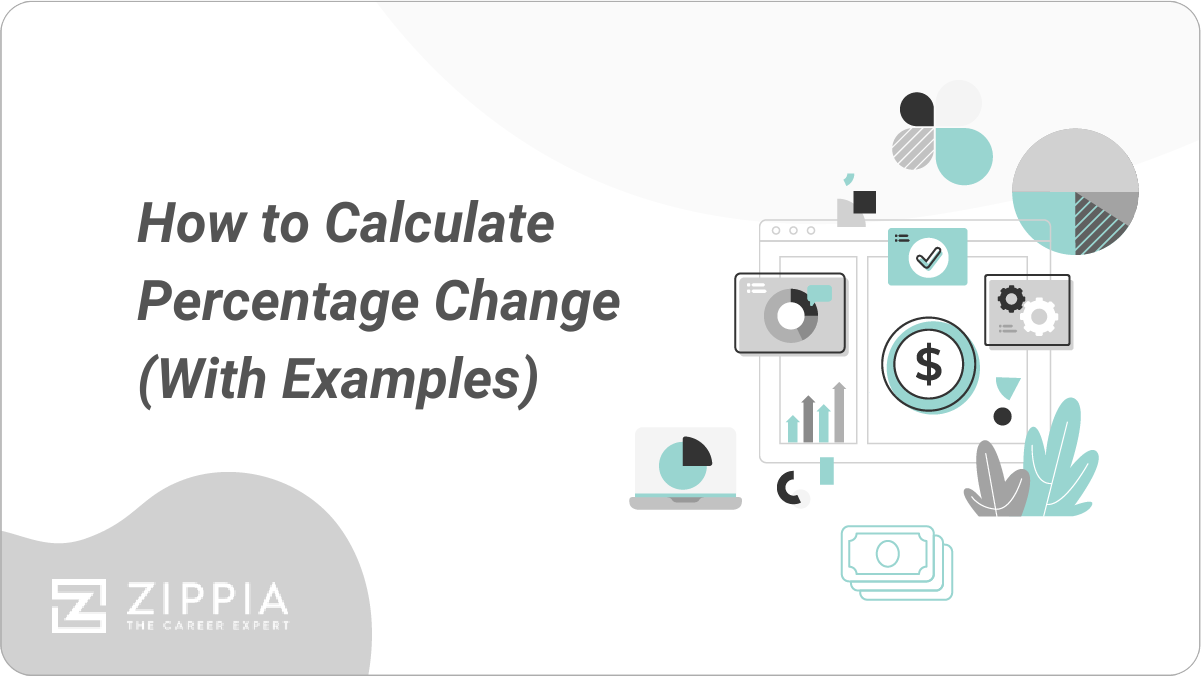- Formulas
- APR Formula
- Total Variable Cost Formula
- How to Calculate Probability
- How To Find A Percentile
- How To Calculate Weighted Average
- What Is The Sample Mean?
- Hot To Calculate Growth Rate
- Hot To Calculate Inflation Rate
- How To Calculate Marginal Utility
- How To Average Percentages
- Calculate Debt To Asset Ratio
- How To Calculate Percent Yield
- Fixed Cost Formula
- How To Calculate Interest
- How To Calculate Earnings Per Share
- How To Calculate Retained Earnings
- How To Calculate Adjusted Gross Income
- How To Calculate Consumer Price Index
- How To Calculate Cost Of Goods Sold
- How To Calculate Correlation
- How To Calculate Confidence Interval
- How To Calculate Consumer Surplus
- How To Calculate Debt To Income Ratio
- How To Calculate Depreciation
- How To Calculate Elasticity Of Demand
- How To Calculate Equity
- How To Calculate Full Time Equivalent
- How To Calculate Gross Profit Percentage
- How To Calculate Margin Of Error
- How To Calculate Opportunity Cost
- How To Calculate Operating Cash Flow
- How To Calculate Operating Income
- How To Calculate Odds
- How To Calculate Percent Change
- How To Calculate Z Score
- Cost Of Capital Formula
- How To Calculate Time And A Half
- Types Of Variables
Find a Job You Really Want In
Calculating a percentage change is a useful skill for every professional to have. Whether you’re comparing prices, production times, or inflation rates, it’s almost a guarantee you’ll need to calculate a percentage change at some point.
In this article, we’ll teach you how to calculate a percentage change, and we’ll even show you a few examples of how to do this.
Key Takeaways:
-
A percentage change is a change in two values over time. This change is expressed as a percentage.
-
To calculate a percentage change, find the difference of the two values, divide that by the initial value, and multiply that by 100.
-
Knowing how to calculate percentage changes is valuable when working with values such as growth rates, inflation rates, and interest rates.

What is percentage change?
Percentage change is a mathematical concept that shows a change over time. This can be anything from prices to time itself. And, it can represent a negative or positive change. As would be expected, positive values will indicate a percentage increase (e.g., a price raise), whereas negative values indicate a percentage decrease (e.g., a price cut).
Percentage change is extremely useful in the world of finance, as one of the most important things it can represent is security.
Security represents any kind of tradable financial asset. Forms of security include debt securities, equity securities, and derivatives. In the case of percentage change, you can track the price of security.
You can use the percentage change formula to track individual securities, the value of currencies, and more. Used more simply, percentage change can also tell you how much the price of a product has increased or how much extra pizza you bought.
Overall, it’s an incredibly useful concept for companies and individuals alike!
Choose From 10+ Customizable Resume templates
Zippia allows you to choose from different easy-to-use resume templates, and provides you with expert advice. Using the templates, you can rest assured that the structure and format of your resume is top notch. Choose a template with the colors, fonts & text sizes that are appropriate for your industry.
Percentage change formula
Luckily, the formula for calculating percentage change isn’t very complex. First, find the difference between the two values you want to compare. Next, you divide the increase or decrease by the first initial value. Then, after multiplying that by 100 to get a percentage, you’re all set.
Here’s the formula for percentage increase:
Percentage change = (FV − IV) ÷ IV × 100
FV = final value
IV = initial value
Here’s the formula for percentage decrease:
Percentage change = (IV − FV) ÷ IV × 100
FV = final value
IV = initial value
How to calculate percentage step-by-step
To better understand how to go about calculating percentage change, try following these step-by-step guides:
Percentage increase
-
First, as mentioned, calculate the difference between the initial value and the final value. This will allow you to find how much it’s increased. (increase = final value − initial value)
-
Next, divide the increase by the initial value. This will give you a decimal. (decimal = increase ÷ initial value)
-
Multiply the decimal you receive by 100 to get a percentage. (% increase = decimal × 100)
This calculation is meant to represent a percentage increase, but if the percentage you get is negative, that would mean that the percentage change is a decrease.
Percentage decrease
-
First, calculate the difference between the initial value and the final value, but in reverse from the previous steps. This will allow you to find how much it’s decreased. (decrease = initial value − final value)
-
Next, divide the increase by the initial value. This will give you a decimal. (decimal = decrease ÷ initial value)
-
Multiply the decimal you receive by 100 to get a percentage. (% increase = decimal × 100)
This calculation is meant to represent a percentage decrease, but if the percentage you get is negative, that would mean that the percentage change is an increase.
Real-life examples of percentage change
-
In this first example, consider the following:
Percentage Change in Price Example CalculationJames wanted to buy a $22 bowl set but didn’t have money at the time. When he returns to buy the same set, the price has increased to $26. James wants to know just how much the price has increased, as he doesn’t want to buy it if it’s increased by more than 20%.
We can use percentage change to find just that. In this case, we’re looking for a percentage increase.
-
First, calculate the difference between $22 (the initial value) and $26 (the final value). This will allow you to find out how much the price has increased. ($26 − $22 = $4)
-
Next, divide the $4 by the $22. This will give you a decimal. ($4 ÷ $22 = 0.18)
-
Multiply the 0.18 by 100 to get a percentage. (0.18 × 100 = 18%)
In this case, James will still buy the bowls because their price increase didn’t exceed 20%.
-
-
In this next example, we’ll examine how to calculate the percentage change of time as a resource.
Percentage Change in Time Spent Example CalculationPaul is working on a new product for his small business and wants to understand better how he should price it. To do this, he’s going to find the percentage change between how long it took him to make an old, similar product vs. this new product. Therefore, he can increase the price by the percentage change he calculates.
The old product took 5 hours to make, whereas the new product takes 7 hours to make. How much is he going to increase the price? In this case, we’re looking for the percentage increase.
-
First, calculate the difference between 5 hours (the initial value) and 7 hours (the final value). This will allow you to find out how much the price has increased. (7 − 5 = 2)
-
Next, divide the two by the 5. This will give you a decimal. (2 ÷ 5 = 0.40)
-
Multiply the 0.40 by 100 to get a percentage. (0.40 × 100 = 40%)
In this case, Paul should increase the price of his new product by 40%.
-
-
In this example, let’s use the real-life values of the U.S. dollar to show how its value has inflated over time.
Percentage Change in Inflation Example CalculationThe currency of the United States has experienced inflation over a long period. This has decreased its value. $100 in 2010 is equal to $124.60 today.
How much has the value of the dollar inflated in the past ten years?
-
First, calculate the difference between $100 (the initial value) and $124.60 (the final value). This will allow you to find how much the value of the dollar has decreased. ($124.60 − $100 = $24.60)
-
Next, divide the $24.60 by the $100, this will give you a decimal. ($24.60 ÷ $100 = 0.246)
-
Multiply the 0.246 by 100 to get a percentage. (0.246 × 100 = 24.6%)
In this case, the calculation was rather easy, but it shows that the value of the U.S. has been inflated by 24.6%.
-
-
In this final example, we’ll calculate the percentage change of your net income over a five-year period.
Percentage Change in Net Income Example CalculationFive years ago, you earned a net income of $56,000. This year, you earned a net income of $73,000. If you’re curious about the percentage change of your net income across this five year period, here are the steps to follow:
-
First, calculate the difference between $73,000 (the final value) and $56,000 (the initial value). This will show you how much your net income has increased. ($56,000 − $73,000 = $17,000)
-
Next, divide $17,000 (the increase) by $56,000 (the initial value). This will give you a decimal. ($17,000 ÷ $56,000 = 0.30)
-
Multiply the 0.30 by 100 to get a percentage. (0.30 × 100 = 30%)
Your net income has increased by 30% in the last five years.
-
The financial value of percentages
As shown, percentage change is a great tool for calculating the value of time, products, currency, and more. It’s easy to calculate and can be useful for companies and individuals alike.
With that in mind, it’s worth noting that there are tons of ways percentages can be useful in financial situations. Here are some of the most common and useful ways percentages are employed:
And more! As you can see, there are a plethora of ways you can use percentages to your advantage. Exciting, right?
How to calculate percent change FAQ
-
How do I calculate the percentage change between two numbers?
You calculate the percentage change between two numbers by finding the difference between the two numbers, dividing that number by the initial value, and multiplying the result by 100.
If you’re trying to calculate the percentage change between 360 and 700, you’d first find the difference (700 – 360 = 340). Then you’d divide 340 by 360 (the initial value), which is 0.94. Finally, to turn that into a percentage, you’d multiply it by 100, which gives you 94%.
-
What is the percent change when 25 is increased to 45?
The percent change when 25 is increased to 45 is 80%. To calculate this, you first find the difference between 45 and 25 — this gives you 20. Then, you take 20 and divide by the initial value, 25. This gives you 0.8. Finally, multiply 0.8 by 100 to find a percentage: 80%.
References
-
U.S. Bureau of Labor Statistics – Calculating Percent Changes
-
The University of Texas at Tyler – How Do I Calculate Percent Change?
- Formulas
- APR Formula
- Total Variable Cost Formula
- How to Calculate Probability
- How To Find A Percentile
- How To Calculate Weighted Average
- What Is The Sample Mean?
- Hot To Calculate Growth Rate
- Hot To Calculate Inflation Rate
- How To Calculate Marginal Utility
- How To Average Percentages
- Calculate Debt To Asset Ratio
- How To Calculate Percent Yield
- Fixed Cost Formula
- How To Calculate Interest
- How To Calculate Earnings Per Share
- How To Calculate Retained Earnings
- How To Calculate Adjusted Gross Income
- How To Calculate Consumer Price Index
- How To Calculate Cost Of Goods Sold
- How To Calculate Correlation
- How To Calculate Confidence Interval
- How To Calculate Consumer Surplus
- How To Calculate Debt To Income Ratio
- How To Calculate Depreciation
- How To Calculate Elasticity Of Demand
- How To Calculate Equity
- How To Calculate Full Time Equivalent
- How To Calculate Gross Profit Percentage
- How To Calculate Margin Of Error
- How To Calculate Opportunity Cost
- How To Calculate Operating Cash Flow
- How To Calculate Operating Income
- How To Calculate Odds
- How To Calculate Percent Change
- How To Calculate Z Score
- Cost Of Capital Formula
- How To Calculate Time And A Half
- Types Of Variables

















